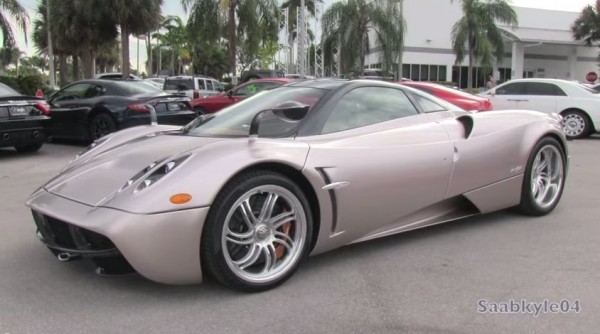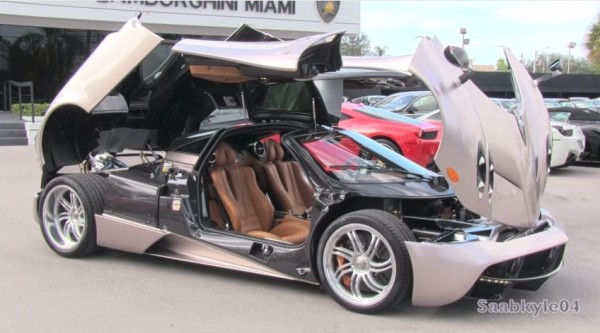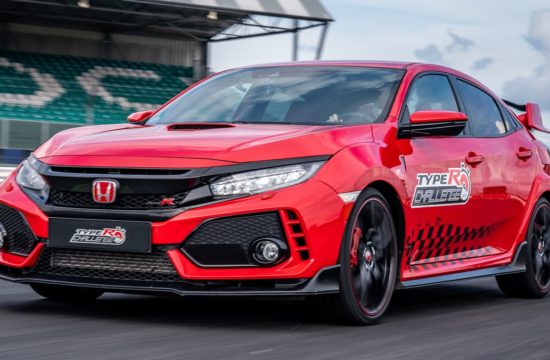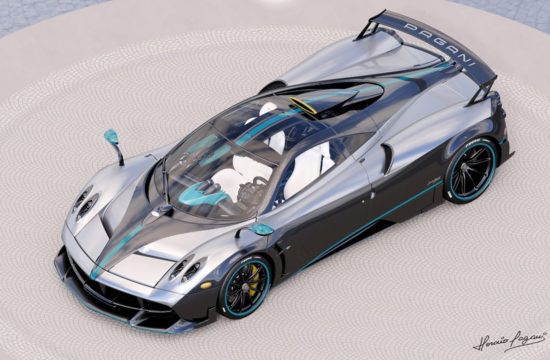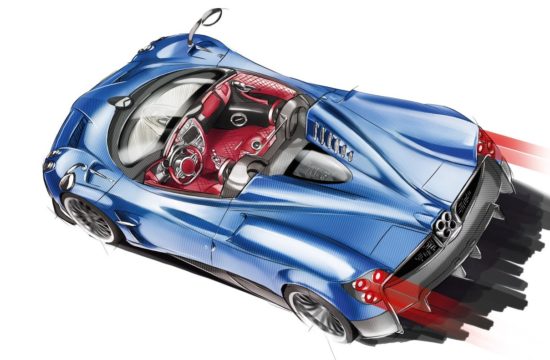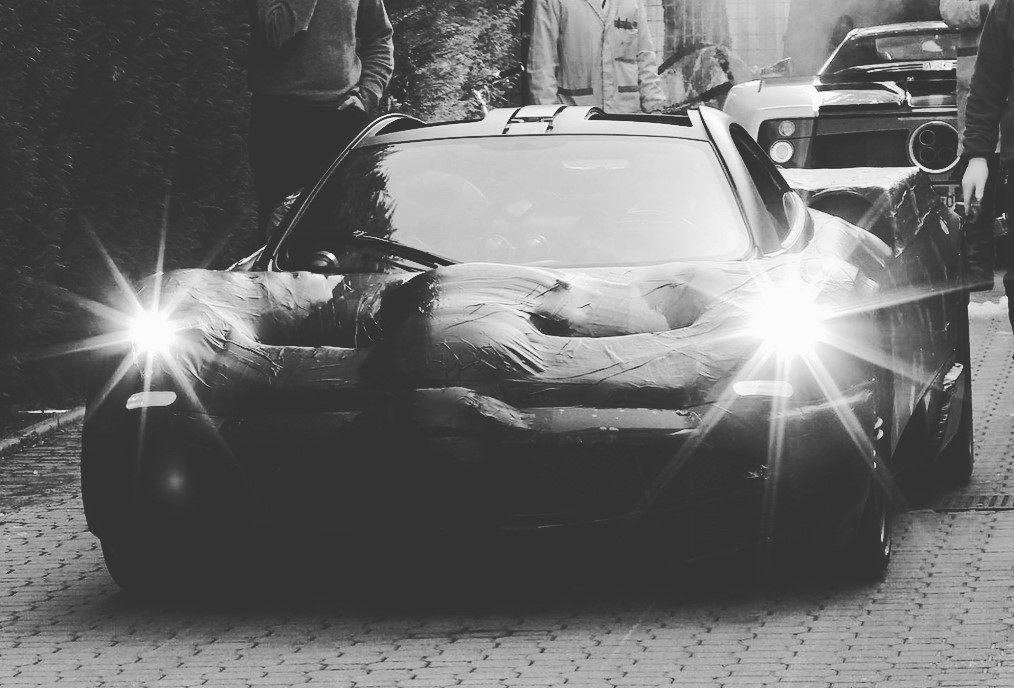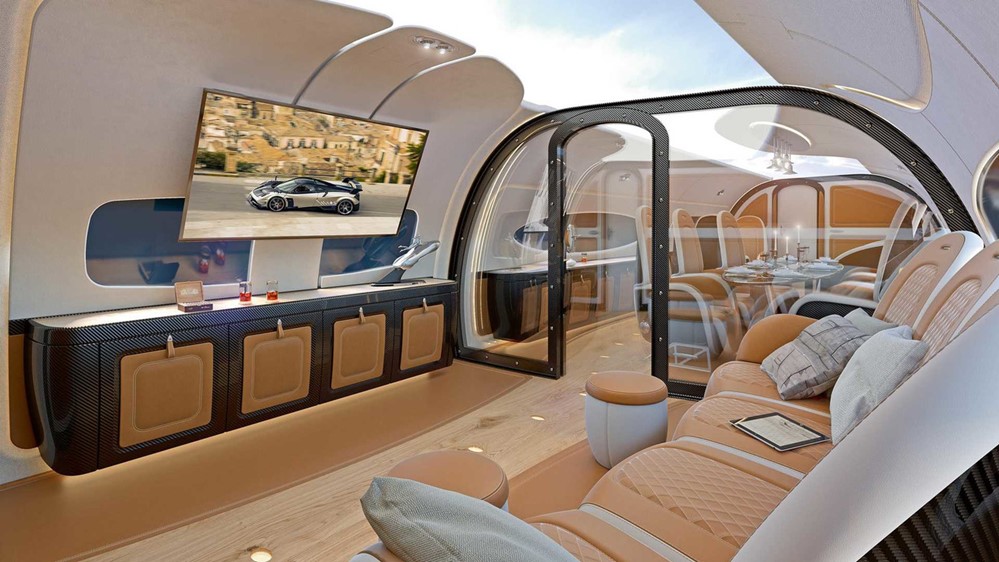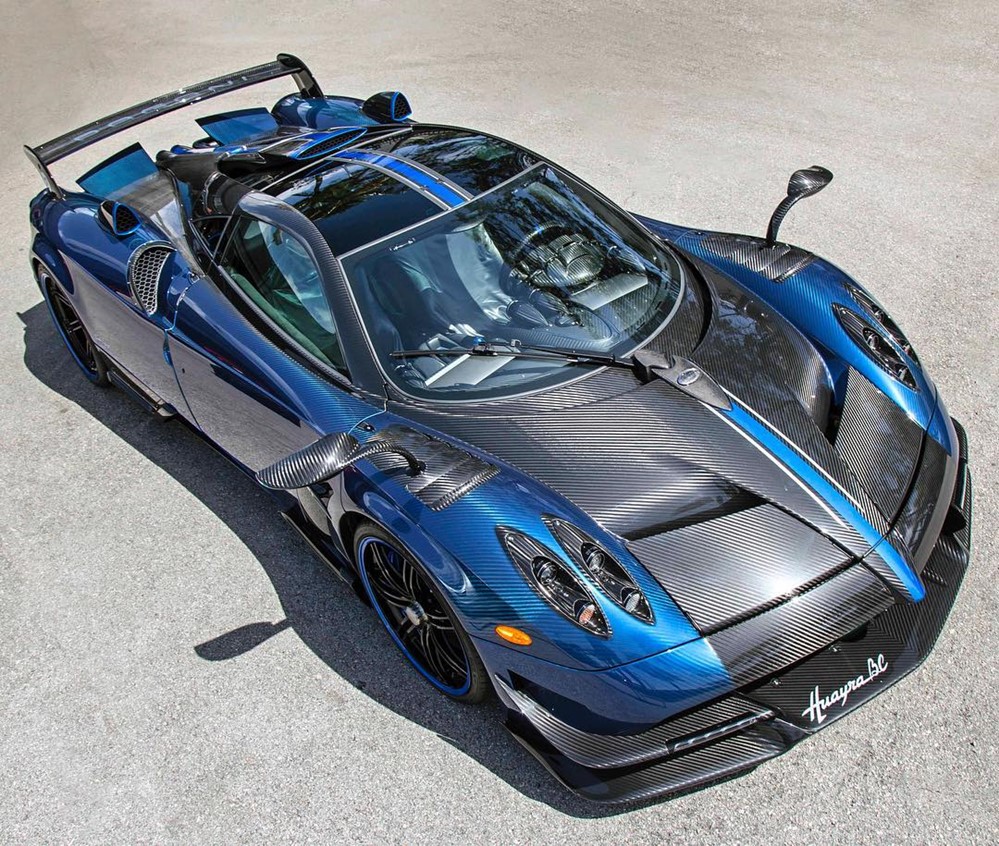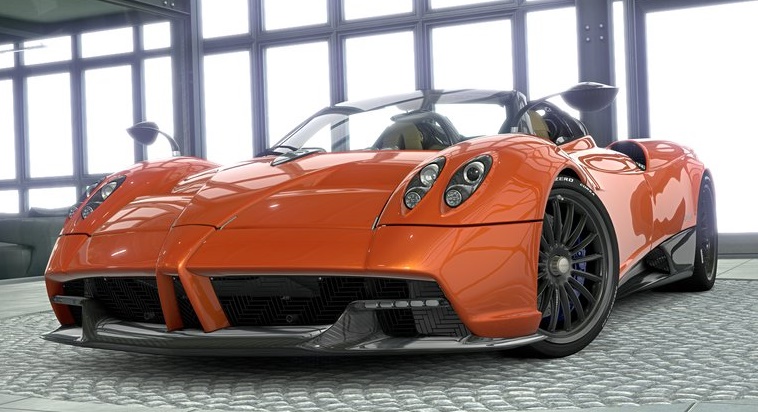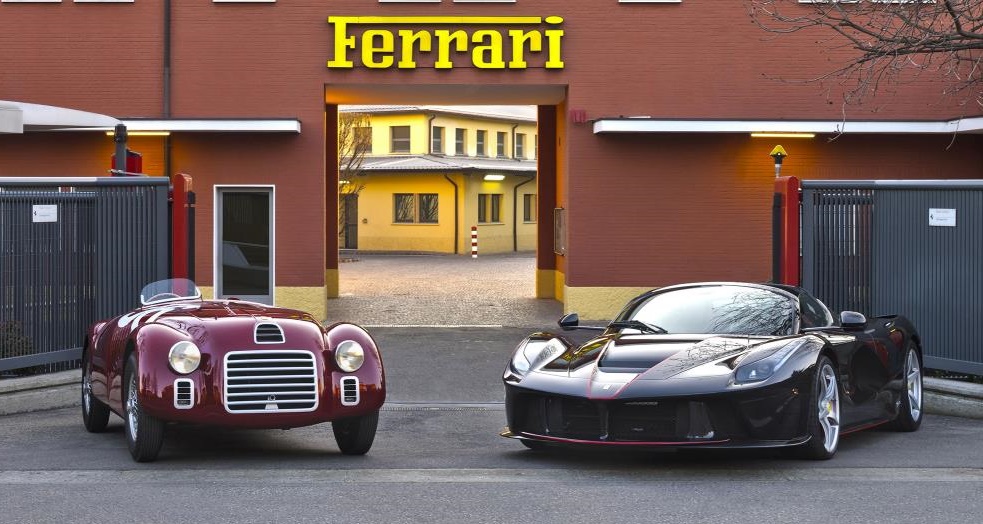The amazing Pagani Huayra has been around since 2011 and in that time we have shown you pretty much every aspect of the car. But a car like the Huayra is full of wonderful little details and to check out all of them you need plenty of time and, well, full access to a real Huayra.
Now, that’s a difficult thing to achieve, because Pagani Huayra is limited to just 100 fully bespoke units, each costing as near as makes no difference $2 million USD. However, a generous Miami-based Huayra owner recently allowed SaabKyle to film the car for one of his famous in-depth walkaround videos.
So here’s half an hour of uninterrupted Huayra awesomeness:
Pagani Huayra Technical Specs:
- Engine: Mercedes-AMG M158 V12 twin-Turbo
- Displacement: 5980 cc
- Power: 730 hp
- Torque: 1.000 Nm
- Gearbox: transverse sequential seven speed gearbox
- Dimensions: Length: 4605mm; Height: 1169mm; Car’s body width: 2036mm;
- Dry weight: 1.350 kg
- Weight distribution: 44% front 56% rear
Horacio Pagani on the Huayra:
After seven years of hard work I am now able to tell you a little brief history and the path that led to the birth of the Huayra, project name C9.
The concept was born in 2003, the year of the introduction of the Zonda S Roadster. As you may recall the early 2000s were prosperous for the world of supercars. The commitment of big car manufacturers have contributed to the rise of extraordinary cars like the Bugatti Veyron, Porsche Carrera GT, Ferrari Enzo, Mercedes McLaren SLR.
This context led us to make several observations concerning the future of the Zonda and what could be a new Pagani. Since the original design of the Zonda was done in the early 90s the first thought was that it was now an obsolete project and we decided to imagine the car totally different in form, dimension, dynamics and technology, all this without losing the essence of our approach, to follow a concept born in the Renaissance where Leonardo da Vinci told us that art and science are disciplines that need to walk alongside. The eternal element air in all its forms, especially wind, became determining in defining the concept and it was a great inspiration, as it is ever present in our lives: a jet turbine, the silence of a glider… the elegance of the wind movements but also the violence and force that it can unleash.The Huayra is made of more than 4000 components (engine and gearbox not included). To create them and put them together requires creativity, patience and passion that I shared with a fantastic young team and with the most competent partner in all sectors.
In defining the size, I immediately thought of a car that would be longer than the Zonda, a track increased by 70 mm, a cabin position shifted 40 mm to the back and even more spacious. The silhouette should be soft, easy to read and form itself from lean and sleek lines that have a clear beginning and an end.As the style is concerned during these five years we have tried to find the best compromise working on 8 scale models and 2 full scale models, as well as hundreds of drawings without never leaving the original idea and taking meticulous care of the details.
The ideas were of including elliptical shapes reminding of our brand in the front and at the back, keeping the central exhaust as the completion of the line of the canopy, the line starting at the headlight area that continues and ends into the air intake. We also thought from the beginning of active aerodynamics. Flaps that are activated according to the study of results gathered through calculations and aerodynamic testing. The whole car is shaped as a wing so it was necessary to create a high front to reduce the length of the upper part of this wing to counteract lift.
The active suspension in the front and the 4 flaps allow to optimally balance the drag coefficient and downforce.Mercedes-AMG has created a truly unique and lightweight engine, a twin turbo with 730 HP and 1000 Nm of torque that perfectly complements the car giving a feeling that has motivated our research: that of the brute force of an airplane taking off.
The main focus was in a power delivery that was linear and not with lag, because that could potentially create safety problems or a continuous operation of electronic driving aids.
Mercedes-AMG already 5 years ago thought about the coming environmental restrictions by creating a 12-cylinder engine that is at the peak of efficiency in terms of CO2 and consumption.Pirelli has created a very progressive tyre with a exceptional grip in all situations and with low rolling friction. Every aspect of safety was treated taking into account the dynamic by which most accidents with high performance rear engined cars occur.
While developing the C9 we witnessed the evolution of the different models of the Zonda and it showed us that the Zonda wasn’t obsolete as I had originally feared. The Zonda R has been a key laboratory for the Huayra. The team was able to work on many projects at the same time driving on different tracks that occasionally came to meet by sharing engineering concepts, materials, safety and scientific or design studies.

